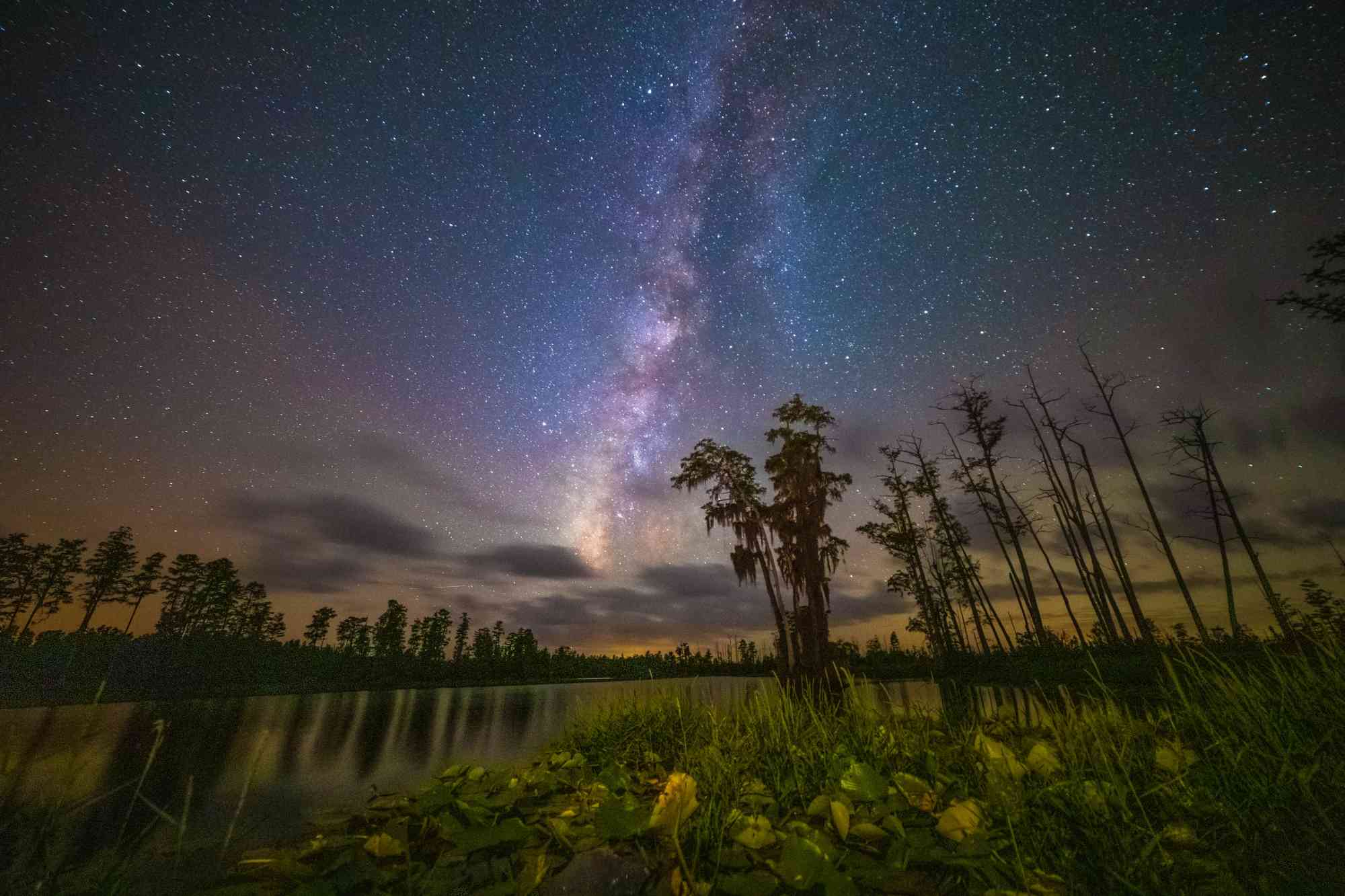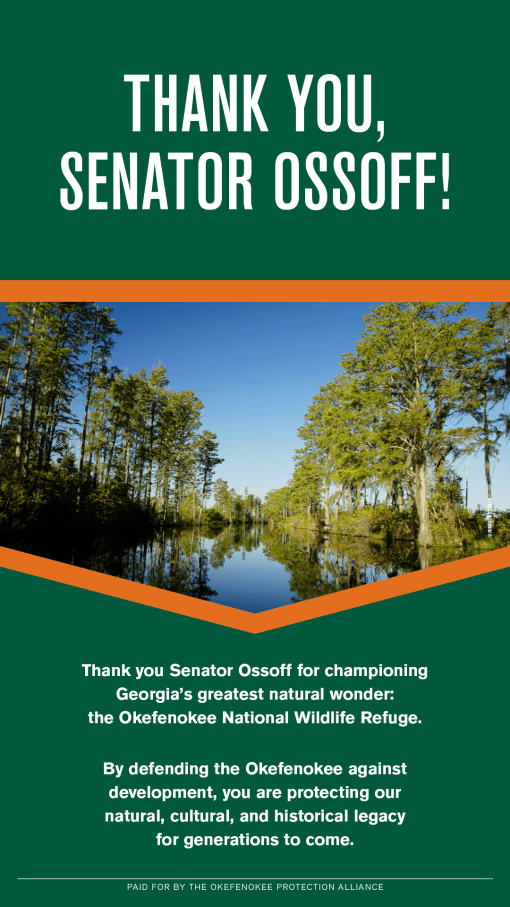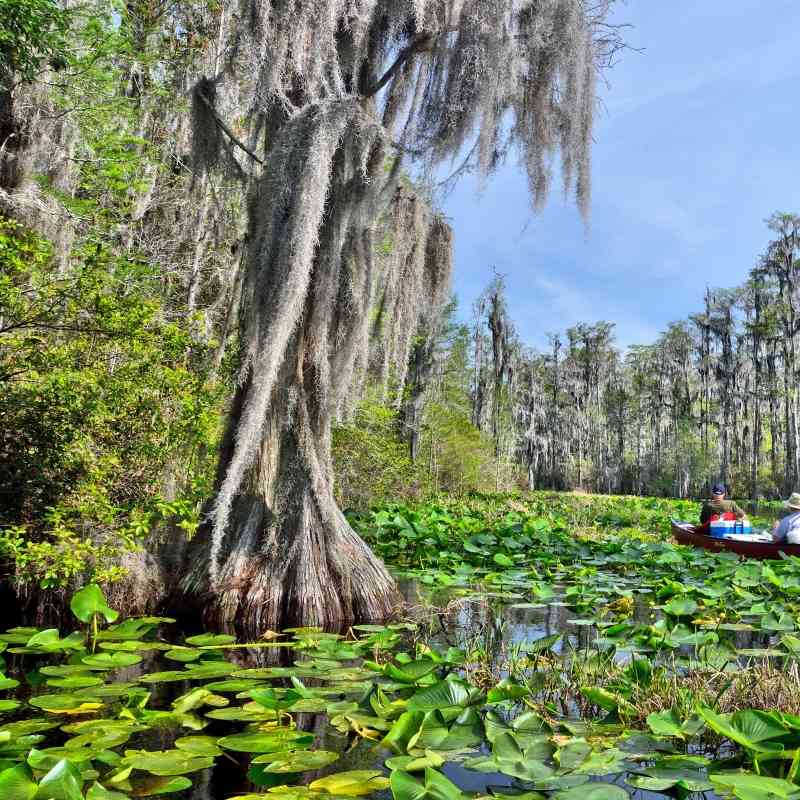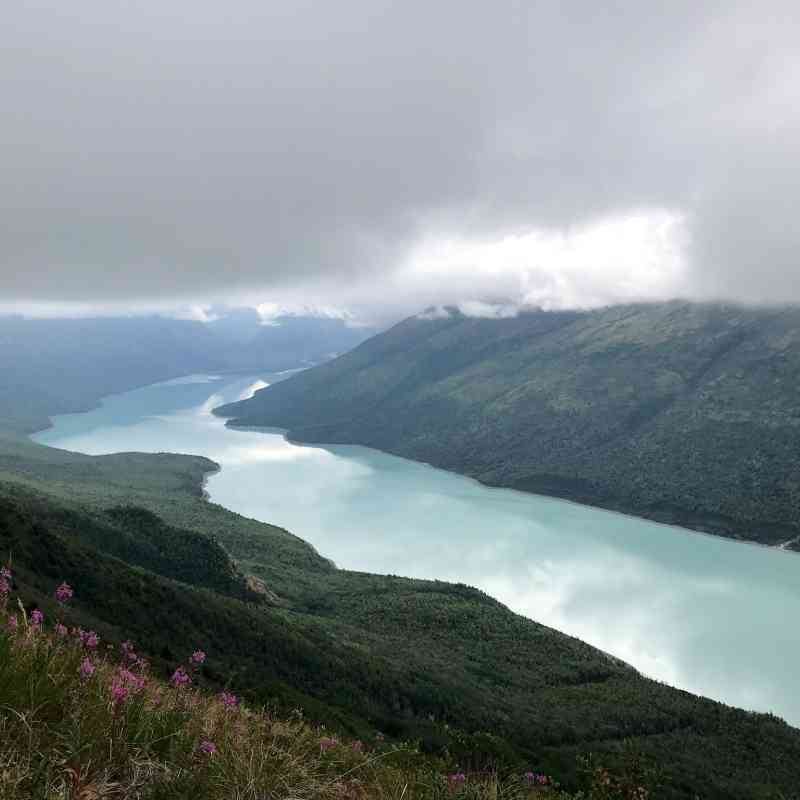Behind the defense and survival of every single green spot on the American map are a handful of champions—people who selflessly toiled, often against great odds, to secure the gift of our natural heritage for future generations. But for their efforts, the Grand Canyon would have been dammed, most ancient redwoods axed and the Smokies bisected by roadbuilding.
The Okefenokee Swamp, a sleepy mosaic of cypress forests, pine islands and alligator-laden blackwater channels, has long captured the public’s imagination. For over a century, local communities, various coalitions and politicians of all stripes have fought for its protection. This conservation leadership began with local groups and President Franklin Roosevelt, and later with various members of Congress, including Bill Stuckey, Bo Ginn and Max Cleland, taking up the mantle.
Just as another threat has arisen, so, too, has one of its greatest champions yet: Senator Jon Ossoff.
For roughly four years, an Alabama-based company, Twin Pines Minerals, has tried to break ground on a titanium mining complex adjacent to the Okefenokee National Wildlife Refuge. Due to illegal regulatory rollbacks, the company managed to evade federal review, subverting the public process typically required of controversial projects. Federal agencies, including the U.S. Fish and Wildlife Service (FWS), anticipate potentially catastrophic impacts, yet were entirely cut out of the review process—until now.
In early 2021, Senator Ossoff and Senator Raphael Warnock pressed FWS to support the state in its permitting process and declared the refuge “sacred” ground. After federal courts struck down those rollbacks, Senator Ossoff joined community members, conservationists and the Department of the Interior to put on a “full court press” to protect the swamp.
The goal was to pull back the mechanism that gave away the keys to the Okefenokee: an approved jurisdictional determination issued by the Army Corps of Engineers in October 2020.
This pursuit eventually took Senator Ossoff to the White House where he convened with Secretary of the Interior, Deb Haaland. This historic meeting carried on a tradition of cabinet-level engagement for the Okefenokee. Two former cabinet members recently denounced the Twin Pines project, and Secretary of the Interior Bruce Babbitt fought the first attempt to mine this area in the 1990s.
Just weeks later, the fruits of Senator Ossoff’s labors were realized. We were thrilled to see Assistant Secretary of the Army for Civil Works, Michael Connor, void two jurisdictional determinations. The first was in Arizona, the other in South Georgia related to the Twin Pines project. The Corps specifically cited the failure to properly consult with tribes as mandated by federal law.
While Twin Pines can still pursue the project, they must do so with federal review and a diverse and inclusive public process. This result precludes easy access to the swamp—a success that likely would not have happened without Senator Ossoff’s efforts.
If partisanship is the hallmark of today’s political discourse, the Okefenokee remains an outlier—a rare natural resource valued by people and politicians of all stripes. As the latest to carry the torch, Senator Ossoff has already secured a legacy befitting of the refuge and authored an important chapter in the story of the Okefenokee.
The opportunity remains for stakeholders to write the ending by securing permanent protections for Okefenokee Swamp. As a reporter recently noted, “the seeds for the current plot were foreshadowed” in the failure to secure lasting protections after an almost identical struggle in the 1990s with the DuPont corporation.
With Twin Pines’ options narrowing, we may have another chance to get it right and end the threat once and for all.
We thank Senator Ossoff for his tireless efforts and look forward to that day.
Author

Christian Hunt

Curt Chaffin
comments






